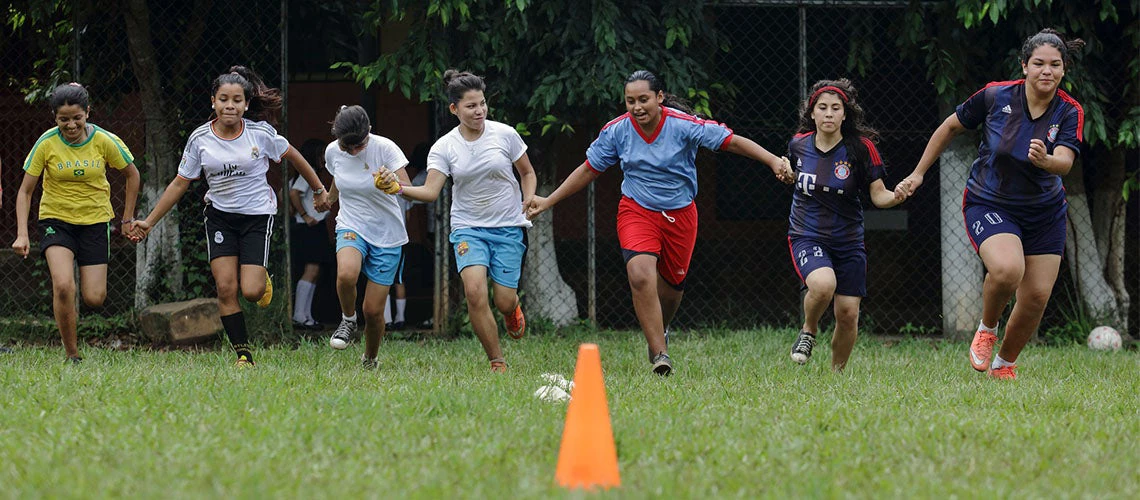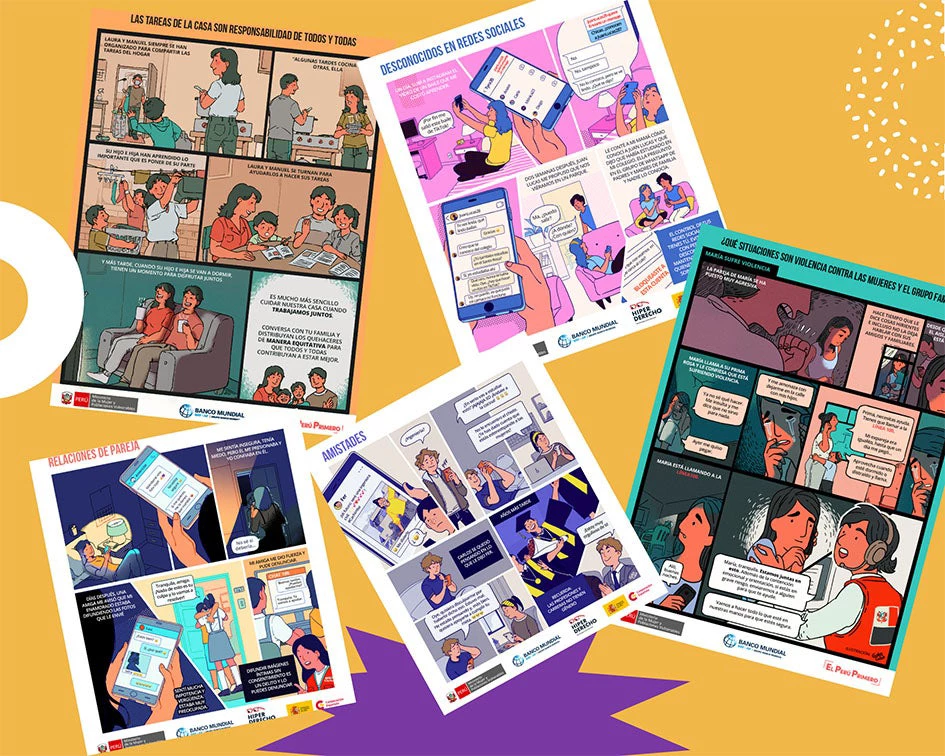 Niñas corriendo juntas tomadas de la mano en el campo de fútbol de una escuela en El Salvador
Niñas corriendo juntas tomadas de la mano en el campo de fútbol de una escuela en El Salvador
“It is necessary to engage more young people and adolescents and actively involve us. If we know our rights, we will be prepared to defend them because we are all equal, and we deserve to live a life free from violence. So, I invite more young people to get informed, participate, and make others listen to their opinions and points of view.”
These words come from Ayline Huamán, a 12-year-old from the NGO GirlGov Peru, during a webinar on innovative practices to prevent gender-based violence among adolescents.
When we talk about gender-based violence (GBV), we usually think of adults and often forget that it also affects young people . We should stop seeing children and adolescents as passive objects or only recipients of information and care. Instead, we must include them as participatory subjects with agency in designing and implementing the actions that concern them. They experience GBV and different challenges in their daily life; they are the true experts in the field.
Adolescents are also especially important to achieving the social norms change that will ultimately prevent violence since adolescence is a time of transformation – a window of opportunity where humans are hypersensitive to influences in their environments. Thus, adolescents can be empowered to transform and establish gender relations based on mutual respect and non-violence. Experiences from governments and organizations working in Latin America and the Caribbean (LAC) give us the following key lessons learned:
1. It is important to include adolescent voices in the design and development of actions. For example, in Peru, approximately 3 out of every 5 adolescents have suffered some form of online harassment. To respond to this issue, the Ministry of Women and Vulnerable Populations (MIMP) and the World Bank organized an online workshop for over 150 adolescents, including Ayline, focused on online GBV and worked with a sub-group of them on the co-creation of four comics based on the stories and scripts proposed by the adolescents covering topics such as online harassment and gender stereotypes. The MIMP also co-created a series of comics focused on the prevention of human trafficking, this time calling on migrant youth to help develop the storyboards. These were widely shared over social media such as Facebook, Instagram, WhatsApp, and Twitter.
2. Technology and social media can be key instruments to harness GBV prevention activities for adolescents . For example, the social impact startup Talk2U works to generate behavioral changes using science, innovative technology, and storytelling; they specialize in developing learning conversations via chat platforms powered by artificial intelligence (AI), which guide youth through evidence-based interventions across various topics. Talk2U has presence in different countries of the region. For example, in Brazil, they implemented the initiative “Caretas” that focuses on digital safety, sexting, and revenge porn in youth and uses an AI character to discuss the risks, support victims, and promote behavior change. Another program in Brazil called “Without Shame” (Sem Vergonha) creates a safe space for girls to have an insightful conversation about giving consent, setting boundaries, and having healthy relationships. These actions have had over 1.6 million unique users, and have published a randomized controlled trial (RCT) on their effectiveness.
3. Prevention strategies must be tailored to the local context, in addition to being built or adapted specifically for young audiences . For example, the NGO Fòs Feminista (former International Planned Parenthood Federation – Western Hemisphere Region, or IPPF WHR) created a free global educational resource AMAZE, which provides adolescents (age 10-14) with evidence-based and honest information and tools on comprehensive sex education. AMAZE creates age-appropriate videos for adolescent audiences across many sexual health and GBV topics, with the content fully adapted to each country context (for example, in terms of the slang terms used). They implement innovative and participatory dissemination strategies and experiences, and they have Amaze Youth Ambassadors in several countries of the LAC region, including Belize and Guyana in the Caribbean.
Many challenges remain regarding GBV prevention, which have only been further exacerbated by the COVID-19 pandemic. Nonetheless, primary prevention of GBV is possible even during a pandemic . These three actions further demonstrate this and represent remarkable pioneering interventions in communicating gender-transformative messages to engage adolescents in LAC, using a common language that resonates with their lives.
To shed light on these key strategies for GBV prevention among adolescents, the World Bank Group and the Sexual Violence Research Initiative (SVRI) co-hosted a webinar centered on “Innovative Practices for preventing GBV among adolescents”. These three initiatives shared their experiences and highlighted key insights for designing GBV prevention interventions directed towards youth and adolescents.
The World Bank remains fully committed to developing and catalyzing GBV prevention efforts, including adolescents’ voices, as agents of change for a future free from violence.







Join the Conversation